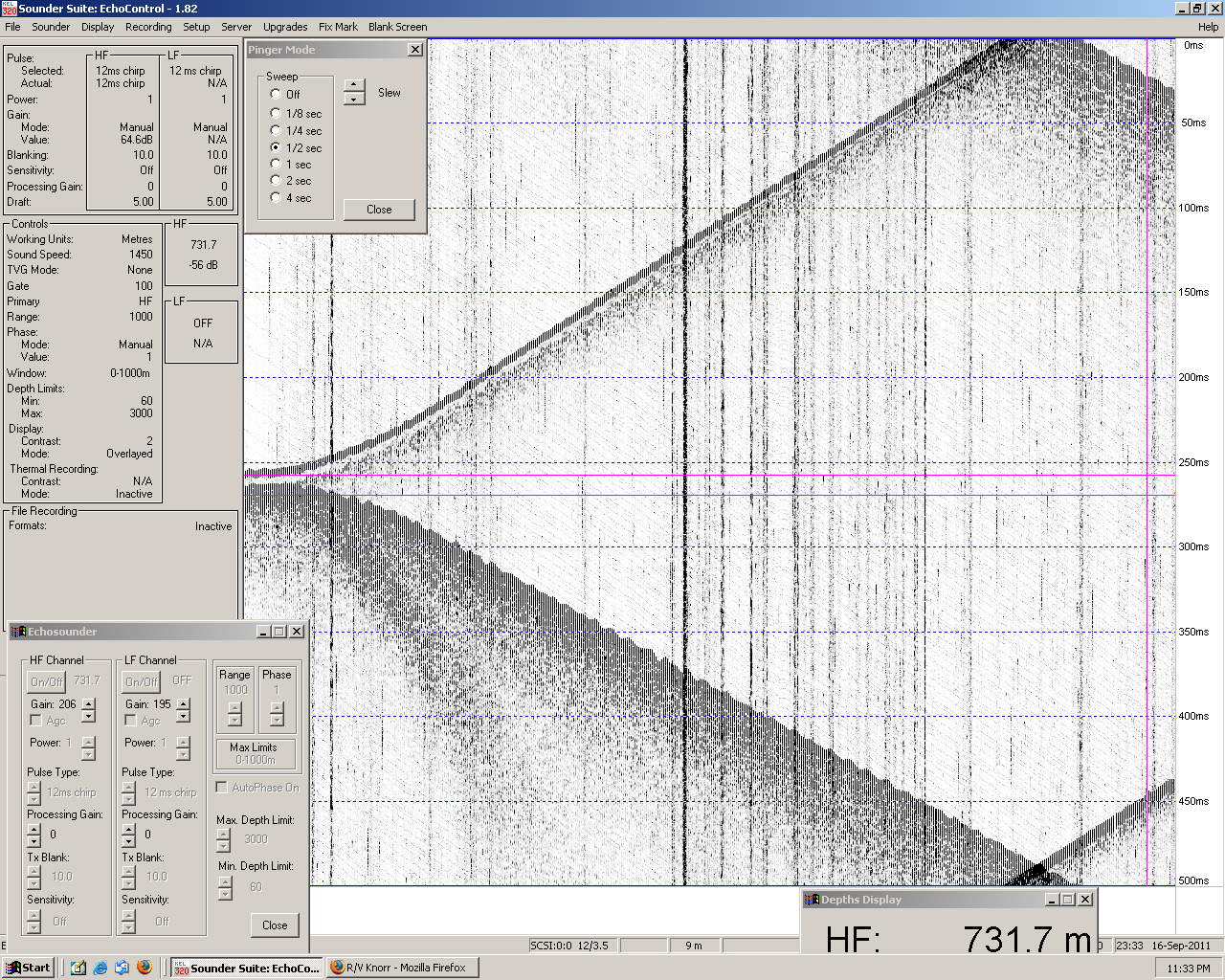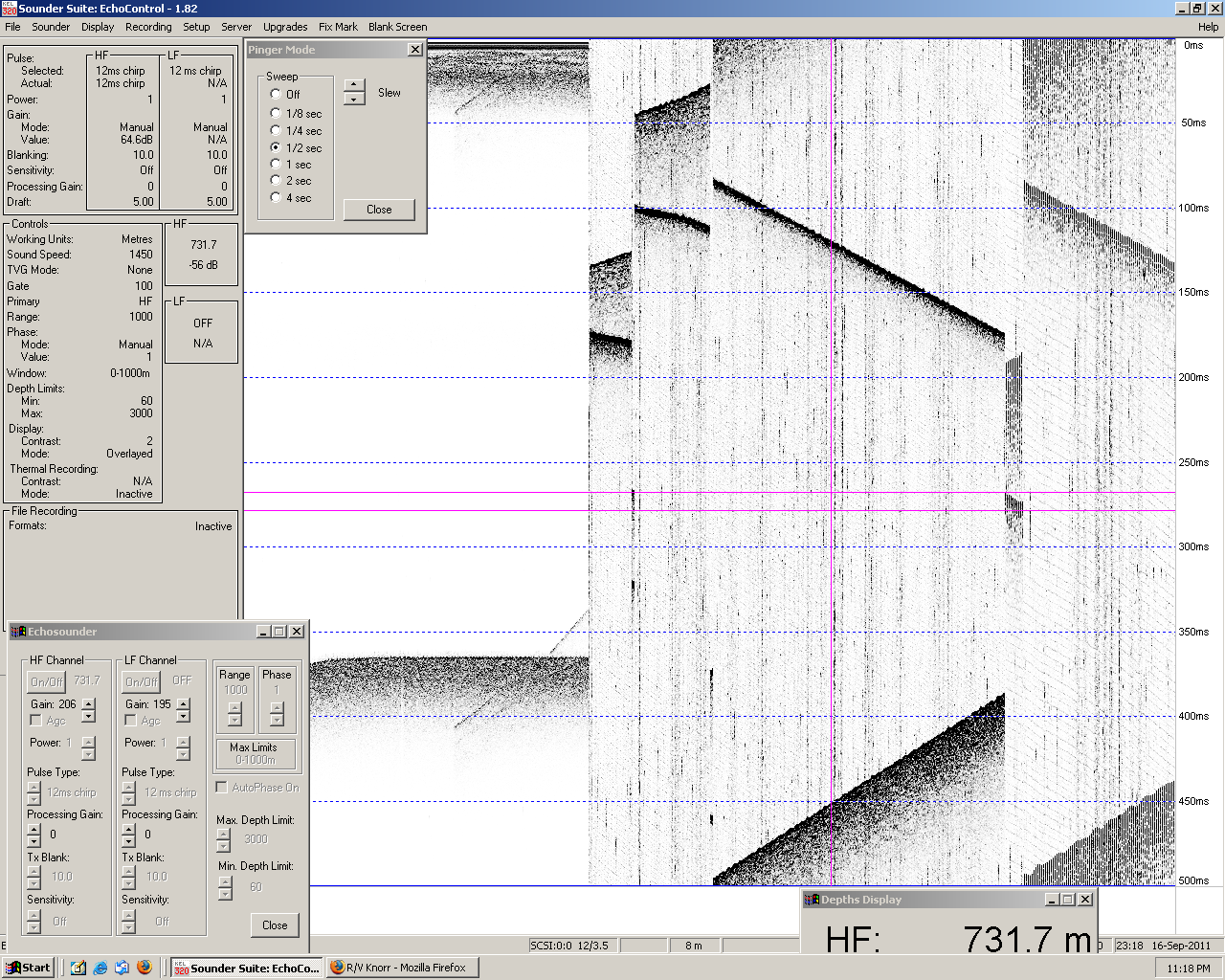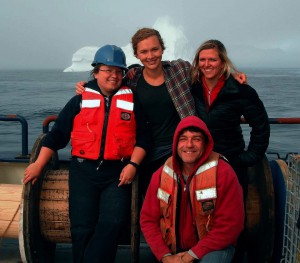
Pinging, so we don’t hit the ground
I’ve been thinking about an old friends recently. I met Anton on a RV Knorr-cruise I was on in 2011, and we spent many fun night watches running CTDs. Together with Sindre, this was our favorite toy: The echo sounder. Many CTD packages have an altimeter on them so they don’t accidentally hit the bottom, and if the package is deep enough, funny pictures develop.
In the picture below, for example, you see the CTD at its deepest at the very left of the screen. The x-axis is time – as new time steps are added on the right, old ones eventually vanish to the left. The y-axis is time in milli seconds, which is more or less proportional to the distance of the pinger to the receiver on board the ship.
So on the left you see those two lines very close together – the top line being the CTD that is sending the chirps, the bottom line is the sea floor. As the CTD comes up again, its own signal rises to the top of the screen (because it’s coming closer to the receiver and hence the run times get shorter) and the sea floor sinks away (because the signal now has to travel down further and further before it is reflected up again).
Then what you see at the right of the plot are more parallel lines emerging. And those occur because the run length of the sound signal is longer than the time between two chirps, so the receiver registers both the actual reflection from the bottom as well as the reflection from a previous chirp.
This is fine when the CTD is going up, but when it’s going down you have to pay close attention because you might have to cross what looks like a reflection from the sea floor a couple of times before you come close the actual sea floor. Unnerving if you aren’t as nerdy as Sindre and me and enjoy playing with this equipment!
In the plot below you can see more funny features: The left half of the screen shows the ship’s echo sounder (so the sea surface and sea floor staying in more or less the same place over time), and on the right we played with different scalings and zoomed in. Obviously, the smaller the units on the scale, the larger the magnification. So yeah. It was fun. And thanks for all the good times, Anton.
So yeah. It was fun. And thanks for all the good times, Anton.

